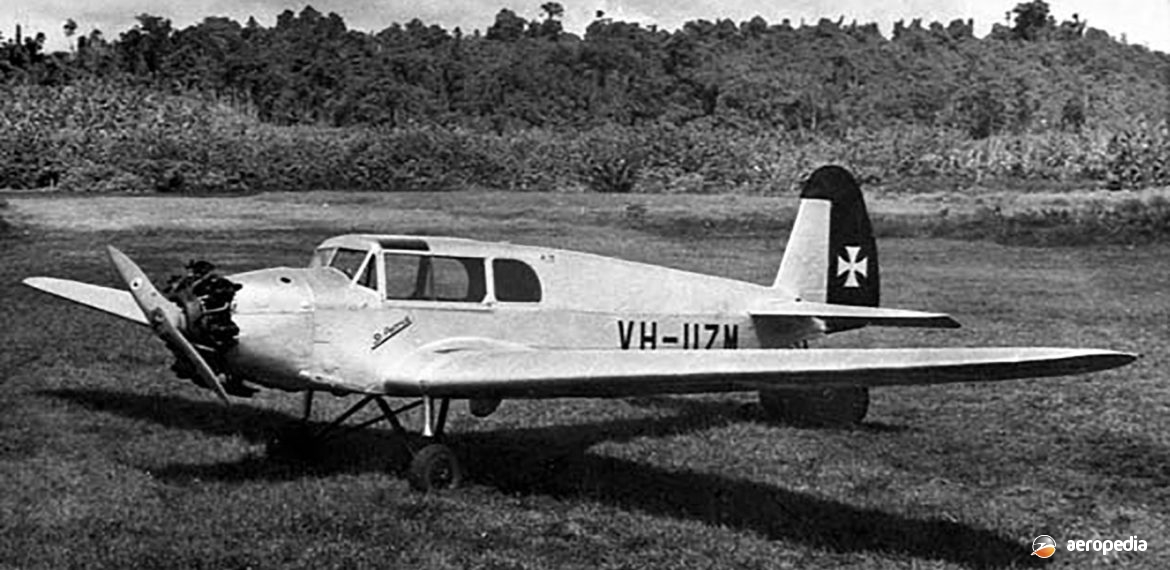Photograph:
Klemm Kl.31a XIV VH-UZM (c/n 653) at Alexishafen, PNG in 1937 (Eddie Coates Collection)
Country of origin:
Germany
Description:
Four-seat light touring monoplane
Power Plant:
One 112 kw (150 hp) Siemens Sh.14a seven-cylinder air-cooled radial engine
Specifications:
- Wingspan: 13.5 m (44 ft 3 in)
- Width with wings folded: 3.25 m (10 ft 8 in)
- Length: 8.35 m (27 ft 4 in)
- Height: 2.25 m (10 ft 8 in)
- Wing area: 20.8 m² (224 sq ft)
- Max speed: 185 km/h (115 mph)
- Cruising speed: 165 km/h (102 mph)
- Landing speed: 83 km/h (51 mph)
- Time to climb to 1,000 m (3,280 ft): 6.4 mins
- Absolute ceiling: 4,500 m (14,760 ft)
- Range: 680 km (422 miles) or 4.2 hours
- Empty weight: 720 kg (1,584 lb)
- Disposable load: 530 kg(1,166 lb)
- Loaded weight: 1,250 kg (2,755 lb)
History:
In 1933 the Kl.31 was introduced to the Klemm range of light aircraft. It was a low-wing cantilever monoplane of typical Klemm construction, the wing having two spruce spars and plywood covering from the nose to the rear spar on both sides of the wing. It had narrow chord ailerons and trailing edges of the wing were covered with fabric. The fuselage was of rectangular section with domed decking, the whole a box structure of plywood. The tail unit was of the monoplane type and the tail-plane was adjustable in flight.
The power plant installed was usually a variant of the Siemens Sh.14a radial providing 97 kw (130 hp) to 112 kw (150 hp) but engines up to 134 kw (180 hp) could be installed and some were fitted with the 90 kw (120 hp) Argus As.8 four-cylinder inverted inline air-cooled unit. Fuel capacity was 150 litres (33 Imp gals).
One example has been registered in this region (VH-UZM – c/n 653), being imported to operate tp Papua New Guinea by the Catholic Mission of the Holy Ghost at Alexishafen. It was registered on 28 April 1937. It had been loaned from Father Ziegler in Switzerland for church work in Papua vNew Guinea. However, on 7 January 1939 it ditched into the sea off Madang. It appears it was salvaged and the wreck was looked after by Father Glover of the Catholic Mission at Wau, ownership being transferred to him on 9 September, 1940. However, it is not thought to have flown again after the ditching in the open sea and the remains were probably destroyed during Japanese air raids in 1942.

